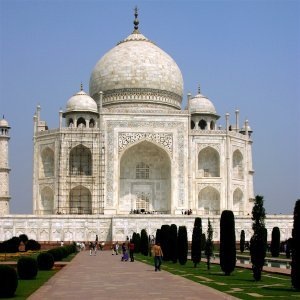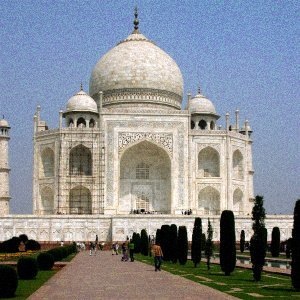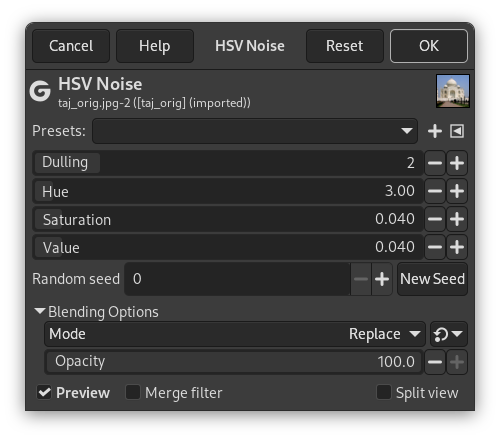The HSV Noise filter creates noise in the active layer or selection by using the Hue, Saturation, Value (luminosity) color model.
![[注意]](images/note.png)
|
注意 |
|---|---|
|
If the image is in grayscale mode, this menu entry is disabled. |
- Presets, “Input Type”, Clipping, Blending Options, Preview, Merge filter, Split view
-
![[注意]](images/note.png)
注意 These options are described in 第 2 节 “Common Features”.
- Dulling
-
This slider (1 - 8) controls how much the new pixel color value is allowed to be applied compared to the existing color. A low dulling will give an important hue variation. A high dulling will give a weak variation.
- Hue
-
This slider changes the hue of the pixels in a random pattern. A higher value will increase the average change from the original pixel color.
- Saturation
-
This slider increases saturation of scattered pixels.
- Value
-
This slider increases brightness of scattered pixels.
- Random seed, New Seed
-
This option controls the randomness of the filter. The Random seed box lets you manually enter a seed for the randomization algorithm used. You can also generate a random seed by pressing the button. If the same random seed is used in the same situation, the filter produces exactly the same results. A different random seed produces different results.






